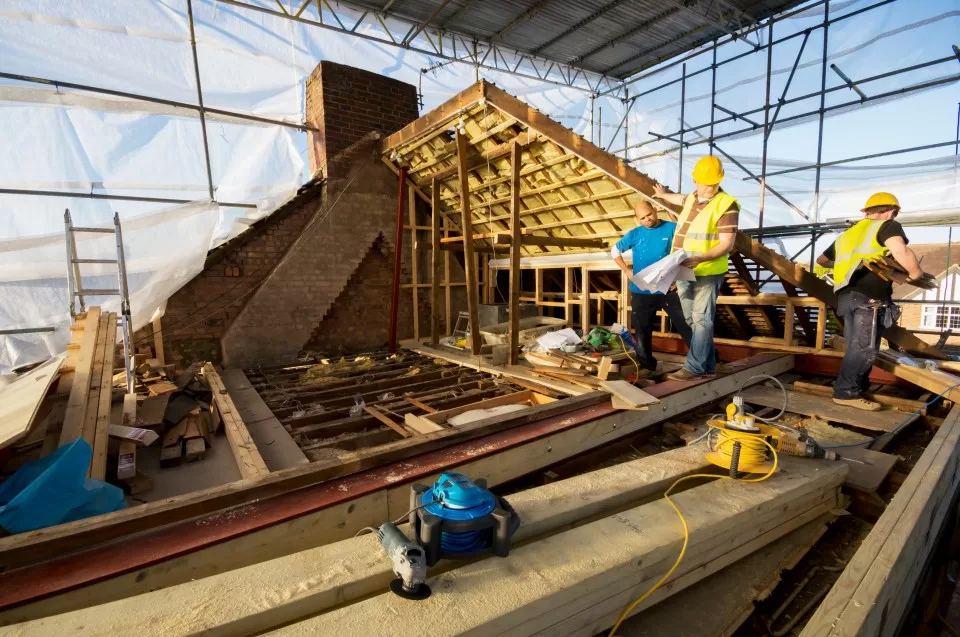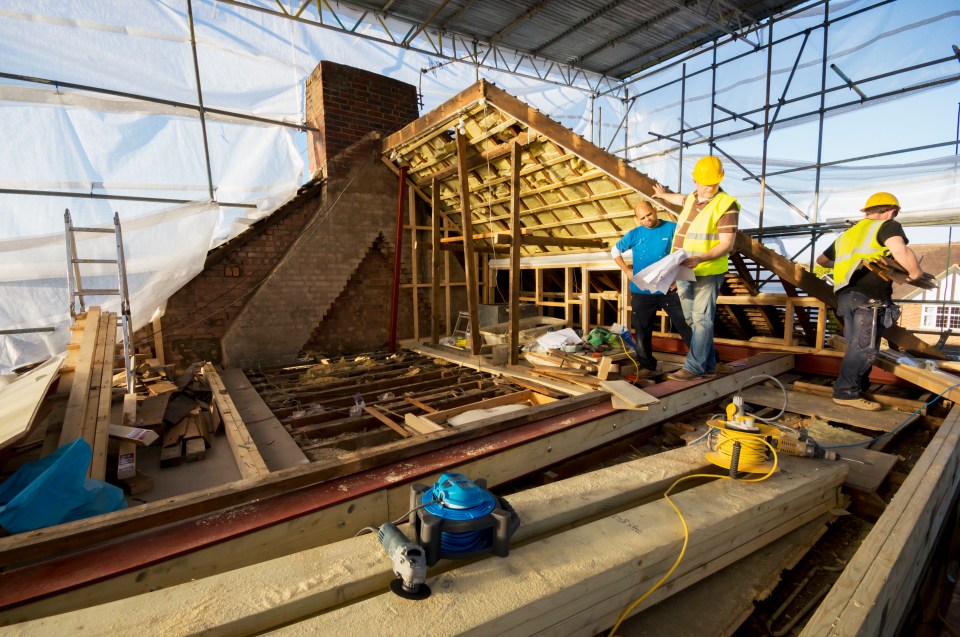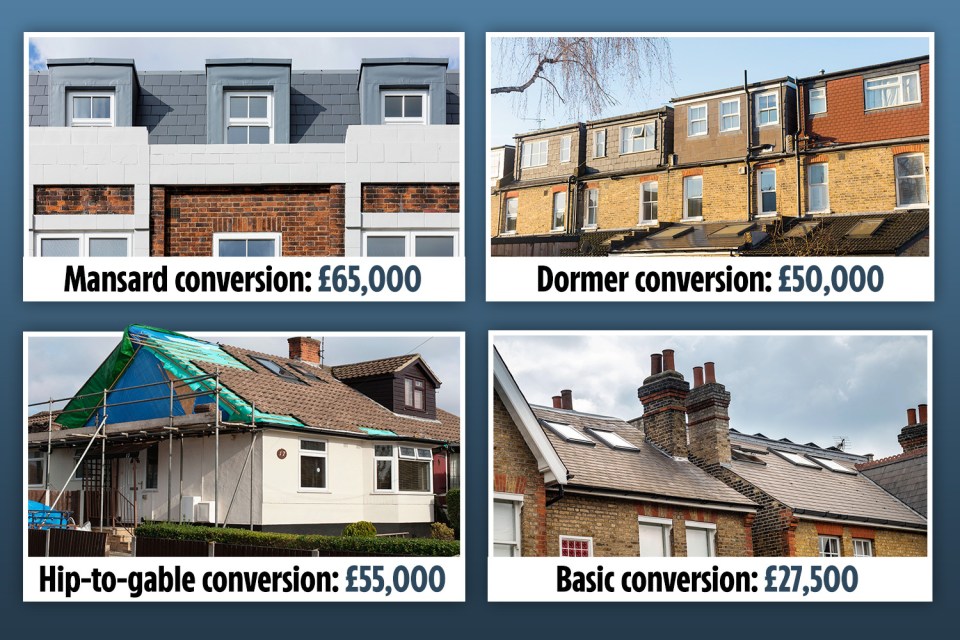A HUGE change to planning rules could make it much easier for homeowners to extend their property.
However, it comes as the government consults on raising the fee for submitting a planning applications.
The government proposes increasing the application fee from £258 to £528.
Depending on parliamentary time, any increase could be implemented by the end of the year.
Ministers have said the fee needs to rise to cover increasing council costs and to enable the hiring of additional staff to speed up decision-making.
However, it’s not all bad news.
Homeowners could soon be encouraged to add roof extensions and additional storeys under new plans to make it more difficult for councils to block taller houses.
Under Labour’s proposed reforms to the National Planning Policy Framework, councils will no longer be able to deny upward extensions solely because they are too high or because neighbouring houses lack extra storeys.
These measures are part of Sir Keir Starmer‘s initiative to accelerate homebuilding and achieve a target of 1.5million homes during this parliamentary term.
The Ministry of Housing Communities and Local Government is now consulting on relaxing rules previously introduced by former housing secretary Michael Gove.
Under these rules, homeowners were more likely to have loft extensions approved if they built mansard roofs.
These specific types of extensions involve the construction of two sloped roofs at either end of a property to make any rooftop extensions look less visible from the street.
However, this method is one of the most costly ways to extend your house upwards.
An average mansard rooftop extension sets homeowners back a whopping £65,000, according to Checkatrade.
Under Labour’s new plans, ministers will relax these rules and ensure that planning rules should support all upward extensions, irrespective of whether a mansard roof is in the plans.
A previous requirement that extensions should not exceed the height of surrounding buildings will also be removed.
The draft planning rules under consultation have deleted the stipulation that extensions should be “consistent with the prevailing height” of neighbouring properties.
“Additionally, councils are advised not to require multiple homes to build extensions simultaneously as a condition for approval.”
It’s important to note that not every loft extension needs planning permission.
However, if your roof isn’t tall enough to accommodate a conversion or you live in a conservation area, you will need to request planning permission.
In these cases, it’s best to hire a surveyor or ask a builder to check whether you need to ask permission from your local authority.
A spokesperson for the Ministry of Housing said: “We want more homeowners to have the right to extend upwards if they choose.
“However, we are clear that any building must be of high quality and in keeping with local character, which is why councils will decide what development is appropriate.”
The consultation will close in September, at which point Parliament will then need to vote on any new legislation proposed.
Is it cheaper to move or extend?
DECIDING whether to move house or extend your current property in the involves several factors, including financial considerations, personal circumstances, and long-term goals.
In many cases, extending your current home can be cheaper than moving, especially when considering the various fees and taxes associated with buying and selling property.
However, if you hate your home’s location, renovating will not help you in the long term.
If you are thinking of renovating or extending your home it’s worth knowing how much value it can add.
For example, according to Checkatrade, simply refurbishing a bathroom can increase your home’s value by 4-5%.
Extending or fitting a brand-new kitchen can add a further 10% to your property’s value.
A loft conversion can add a whopping 20% to your home’s value, too.
TYPES OF ROOF EXTENSIONS
There are several different types of loft extensions which could add substantial value to your home.
Dormer extensions are the most popular and work well on any home with a pitched roof.
Dormers are box structures that extend your roof outwards, adding headspace and windows at a 90-degree angle.
The average dormer extension costs around £50,000, according to Chackatrade.
Mansard conversions completely reshape a home’s roof.
This design is characterized by a dual-pitched roof, with each side having two slopes, which are pinned together by a flat roof.
According to Checkatrade, these are usually the most expensive form of roof extension and cost a typical homeowner £65,000.
Hip-to-gable conversions, which on average cost around £55,000, involve converting one or more of the sloping sides of a hipped roof into a vertical gable wall.
According to Checkatrade, those with an existing roof that is tall enough and doesn’t require any structural changes can turn their loft into a living space with skylights for around £27,000.
How to appeal and win if your home extension is rejected
EXTENSIONS are a great way to improve your home and save money – as building out is often cheaper than moving.
But any building work can quickly create problems with your neighbours if you don’t follow the rules.
Andrew Cann, director of Planning Direct, a planning consultancy based in the East of England, said there are ways to appeal if your initial application for an extension is rejected.
Here’s what you need to know:
How do you actually appeal?
In order to appeal, you’ll need to prepare a Statement of Case.
This is a document setting out why you believe the extension should be granted in planning policy terms – an expert can help you with this, but they will charge.
This is sent along with an appeal form to the Planning Inspectorate.
This is a government body independent of your local council, which will check whether the planning authority which refused you was correct to do so.
There is normally no fee to submit a planning appeal to the Planning Inspectorate.
The main cost is the fee you’ll need to give a consultant or solicitor to prepare and manage it on your behalf – the amount will depend on the case.
How do I win my appeal?
The truth is, there is no guarantee to winning your appeal – and you should be wary of any solicitor or consultant that promises you a victory.
“Any one consultant who says an appeal will definitely be won should be avoided” said Andrew.
That said, there are some tips that can help you on your way to a win.
“Take a look around – if other nearby homeowners have made similar changes, the chances are you will win,” said Andrew.
Another thing to look out for is that your application may have been refused on a technicality or just because of a missing detail.
“Sometimes it is worth re-applying with a modified version if the council only wants small changes. A re-application is free within a year of the first refusal,” said Andrew.
But if an appeal is mishandled and refused this can “blight” the property and you will not get permission in future.
There are some challenges when you are looking to appeal.
You must establish that the extension complies with local planning policy and importantly does not harm others.


